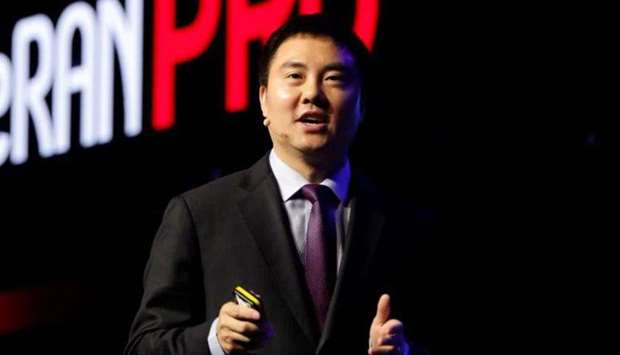Zurich
The 2019 Global Mobile Broadband Forum here made a few exciting statements, including the latest 5G full-series solution for optimal 5G experience by Huawei.
Unveiling the solution, Edward Deng, President of Huawei's Wireless Solution, dilated on the imperatives of using the technology and reaching the desired goals.
"5G has come. Powerful networks deliver optimal user experiences. Advanced algorithms ensure optimal performance. Autonomous driving networks empower the most efficient operation and maintenance. This is what we aim to help operators achieve with 5G," Edward Deng told the media.
Massive MIMO – multiple-input, multiple-output – an extension of MIMO, which essentially groups together antennas at the transmitter and receiver to provide better throughput and spectrum efficiency is key to expanding the limits of Shannon's Law and achieving a significant capacity increase on mobile networks.
The said law relates to a formula in the information theory of American mathematician, electrical engineer, and cryptographer Claude Shannon that determines the maximum, error-free rate of a digital communications channel.
Massive MIMO has been broadly recognised as a standard configuration for 5G mobile networks. Its performance directly determines the quality of 5G networks.
Huawei released its second generation 5G Massive MIMO, the first in the industry to support large-scale deployment to leverage a 5G carrier's high bandwidth and overcome the coverage limitation of C-band. It was also the first of its kind to support a 200 MHz bandwidth and a transmit power of 200 W, while simultaneously boasting a lighter weight and curtailed dimensions.
This efficiency has led to a shipment of over 400,000 units, and the figure is projected to soar to 600,000 by the end of 2019. It provides operators with a crucial foundation to ensure Gbps experiences on 5G networks.
With 5G becoming the new wave what with large-scale deployment all around the world, Huawei has released its third generation 5G Massive MIMO. Combining industry-leading technologies and processes, such as 7nm chips and new compound materials, this product embellishes its prowess over previous models.
The Massive MIMO product supports up to 400 MHz bandwidth in all spectrum scenarios, which again is the highest in the industry. Its transmit power has risen by 320 W, also the industry's highest, allowing for wider C-band coverage. Weight-wise, the Huawei product once again takes the cake, coming in at only 25 kg, enabling it to be deployed by a single person in most scenarios. Its power consumption will eliminate the barriers to global deployment across all scenarios and become a new standard in large-scale 5G deployment.
The latest 5G full-series all-scenario products include BladeAAU, Easy Macro 3.0, BookRRU 3.0, and LampSite Sharing, as well as mmWave macro sites, pole sites, and small cells. BladeAAU supports single-pole installation and offers the industry's highest integration, allowing all sub-6GHz bands to be deployed in a single box in which both active and passive antennas are integrated. Easy Macro 3.0 and BookRRU 3.0 are pole site products utilizing multi-antenna technology for the first time. LampSite Sharing is the industry's digital indoor solution, supporting 400 MHz bandwidth to ensure noteworthy capacity for indoor hotspots.
Edward Deng unveiled the industry's first ADN Mobile solution. This solution includes the Artificial Intelligence (AI) training platform iMaster NAIE, the cross-domain AI unit iMaster AUTIN, and the MBB network AI unit iMaster MAE. These three elements are hierarchically autonomous, with each working independently as a minimum closed loop while also vertically coordinating with each other.
Not done with these innovations, Deng hinted that Huawei will also launch an entire series of Level 3 applications based on this solution next year to implement autonomous driving mobile network. These will include Site Express for auto-deployment, and Alarm Turbo. They will greatly improve operation and maintenance efficiency.
Going a notch higher, Huawei will also provide scenario-based APIs and programmable environments based on ADN-powered platforms. Operators and industry partners can use them to rapidly develop and customise automation applications in line with the varied requirements.
With the new decade in sight, mobile networks are primed for a new era with powerful 5G networks delivering optimal user experiences.


